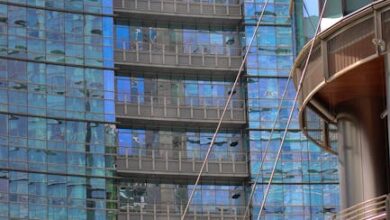The Data Center’s Growing Power Predicament

In our increasingly data-driven world, the humble data center has transformed from a back-office utility into the pulsating heart of our digital lives. From streaming our favorite shows to powering cutting-edge AI, these facilities are working harder than ever. But there’s a catch: all that processing power comes with an insatiable appetite for electricity, and an equally challenging problem of dissipating the immense heat generated. We’re talking about a significant bottleneck in how we design, power, and cool these essential digital behemoths.
For years, engineers have chased marginal gains in efficiency, optimizing everything from server architecture to cooling systems. Yet, a truly transformative leap has remained elusive – until now. Enter Veir, a Massachusetts-based startup that’s been turning heads, not least because of significant backing from tech titan Microsoft. Their mission? To tackle the data center’s power problem head-on by bringing a technology once confined to futuristic visions and niche scientific applications: superconductors.
The Data Center’s Growing Power Predicament
Think about it: every search query, every online transaction, every byte of data processed requires energy. Multiply that by billions of users and an ever-expanding digital landscape, and you quickly understand why data centers are among the world’s largest consumers of electricity. As technologies like artificial intelligence and machine learning demand even more computational horsepower, the power draw escalates exponentially.
This isn’t just about the electricity bill; it’s a multi-faceted challenge. Conventional copper wiring, while reliable, generates resistance, which translates directly into wasted energy and, crucially, heat. This heat then requires massive cooling infrastructures – air conditioners, chillers, and sophisticated fluid cooling systems – which themselves consume vast amounts of energy. It’s a vicious cycle where more power equals more heat, which equals more cooling, and round it goes.
Beyond energy waste, there are practical design constraints. The sheer volume of copper cabling needed to deliver power to thousands of servers takes up valuable space – space that could otherwise house more computing racks. Data center designers are constantly grappling with how to increase power density without expanding the physical footprint, while simultaneously addressing sustainability goals and skyrocketing operational costs. The current trajectory simply isn’t sustainable, either economically or environmentally, which is why radical solutions are not just welcome, but essential.
Superconductors: From Lab Curiosity to Practical Power Solution
The concept of superconductivity is elegant in its simplicity: a material that conducts electricity with zero resistance. Imagine power flowing perfectly, with no energy lost as heat. For decades, this phenomenon, first observed in 1911, was largely a scientific curiosity, requiring incredibly low temperatures – often near absolute zero – to achieve. This made large-scale, practical applications incredibly difficult and prohibitively expensive, relegating superconductors mostly to specialized MRI machines and particle accelerators.
However, the landscape began to change with the discovery of “high-temperature” superconductors (HTS) in the 1980s. While still requiring cooling, these materials operate at significantly warmer temperatures (though still very cold by everyday standards), making their practical application far more feasible. Veir’s breakthrough lies in taking this HTS technology, which has already seen limited deployment in long-distance power transmission lines, and ingeniously adapting it for the unique, high-density environment of a data center.
From Transmission Lines to Server Racks: Veir’s Ingenious Adaptation
Veir’s approach is not about a sudden, new material discovery. Instead, it’s about a highly specialized engineering feat: shrinking and refining a robust technology for a completely different use case. Traditional long-distance superconducting cables are designed for large-scale grid infrastructure. Veir has re-engineered these principles to create compact, efficient power delivery systems suitable for the confined, high-power environments within data centers.
Their solution involves integrating HTS cables into highly efficient power distribution architecture. These cables, when cooled to their operational temperature (which is still significantly warmer than traditional superconductors, often achievable with liquid nitrogen), become perfect conduits for electricity. This means power can be delivered to server racks with virtually no loss and, crucially, without generating excess heat along the power delivery path. It’s a radical departure from the copper-based systems that have been the backbone of data centers for decades, offering a path to unprecedented efficiency.
The Tangible Impact: A Cooler, Greener, Denser Future for Data Centers
So, what does Veir’s superconducting technology mean for the future of data centers? The implications are far-reaching, touching on efficiency, sustainability, and even the fundamental design of these critical facilities.
Beyond Efficiency: The Ripple Effect on Design and Sustainability
-
Dramatic Energy Savings: The most obvious benefit is the elimination of resistive losses. This translates directly into lower energy consumption for power delivery, reducing operational costs and freeing up more of the facility’s power capacity for actual computing tasks. Imagine a significant chunk of your electricity bill simply vanishing.
-
Reduced Cooling Demands: By eliminating the heat generated by power delivery infrastructure itself, the overall thermal load within the data center is significantly lowered. This means less work for the energy-hungry cooling systems, creating a positive feedback loop of efficiency. While servers still need cooling, the power distribution network won’t be adding to the problem.
-
Increased Power Density and Space Efficiency: Superconducting cables can carry far more current than copper cables of the same diameter. This means thinner cables can deliver more power, freeing up valuable physical space within server racks and aisleways. Data center designers can potentially fit more computing power into the same footprint, or even reduce the size of new facilities.
-
Enhanced Reliability: Stable, low-loss power delivery can contribute to more consistent and reliable operation of IT equipment, potentially reducing instances of power fluctuations that can impact server performance or longevity.
-
Environmental Sustainability: With major tech companies like Microsoft committing to ambitious carbon reduction goals, Veir’s technology offers a powerful tool. By reducing energy consumption and the associated carbon emissions from power generation and cooling, superconducting data centers align perfectly with the push for greener IT infrastructure. This isn’t just about efficiency; it’s about building a more sustainable digital future.
The idea of a data center running with such a profound reduction in power loss and heat generation from its core power infrastructure is incredibly compelling. It’s a game-changer that could redefine the economics and environmental impact of our digital world, paving the way for the next generation of computing demands without breaking the bank or the planet.
A Glimpse into Tomorrow’s Data Center
The journey to widespread adoption of superconducting technology in data centers won’t be without its challenges – integration complexities, initial costs, and the need for specialized cooling for the superconductors themselves. However, the potential benefits are so significant that investments from giants like Microsoft underscore the belief that Veir is on the right track. This isn’t just a marginal improvement; it’s a paradigm shift.
As we continue to push the boundaries of what computing can do, our infrastructure must evolve at an equal pace. Veir’s work, bringing the seemingly futuristic realm of superconductors to the very heart of our digital world, represents a monumental step forward. It’s a powerful reminder that sometimes, the most innovative solutions come from adapting existing cutting-edge science to solve pressing, real-world problems. The data center of tomorrow promises to be cooler, more efficient, and far more sustainable, thanks to ventures like Veir.





